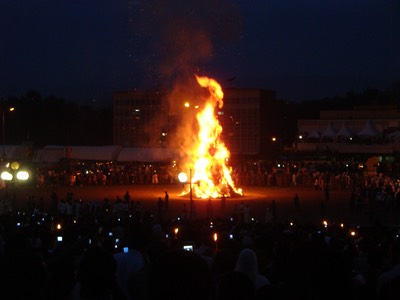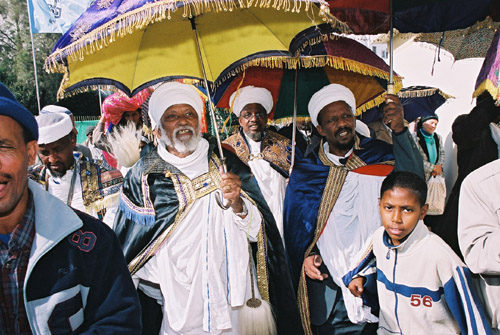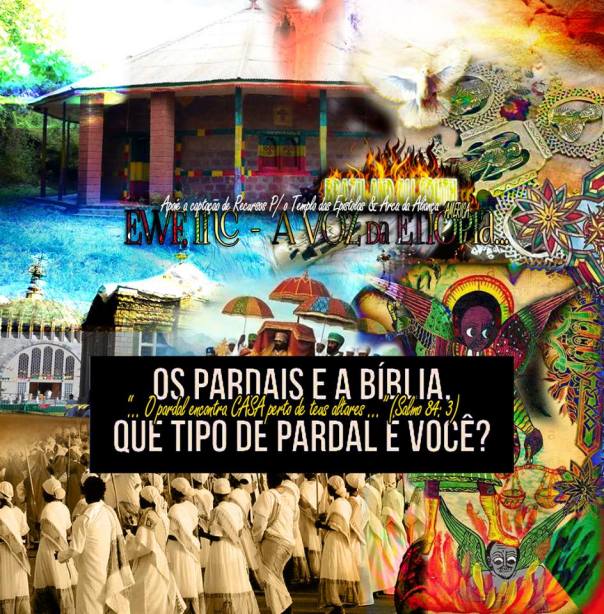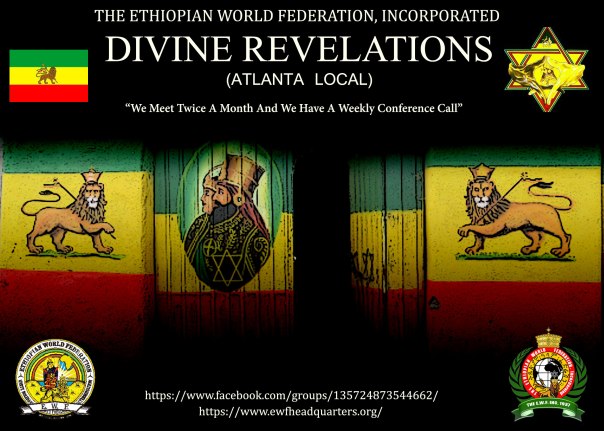This gallery contains 21 photos.
Category Archives: Uncategorized
Coronation Celebration for His and Her Imperial Majesty
The preparations for the coronation ceremony of Emperor Haile Sellassie I and Empress Menen Asfaw were quite elaborate. According to the National Geographic Magazine of June 1931, several streets in the capital were asphalted for the occasion, electric lights were installed, and eucalyptus fences were constructed to hide round “tukul” huts. Arches were erected along the route that the Emperor and Empress were to take, and flags and bunting were strung up for the celebration.
The police and Imperial Bodyguard were transformed with new khaki uniforms. A triangular coronation monument was erected to commemorate Emperor Haile Sellassie I, whose name translated means Power of the Trinity. The upcoming grand coronation would have provided an opportunity for many relatives of both Menen and Tafari to journey to Addis Ababa. This would have been a busy time for the imminent Empress, as she ensured that her visitors were comfortably accommodated. There were several photographs of the immediate and extended family taken at this time by Armenian court photographers, Haigaz and Tony Boyadjians.
To provide seating for 700 guests, a large auditorium was constructed on the western side of St. George’s Church. Inside, two thrones were placed one third of the way into the hall and some distance apart. His Majesty’s throne was decorated in red and gold, while Her Majesty’s was decorated in blue and gold. For seven days and nights prior to the coronation ceremony, forty-nine bishops and priests in groups of seven chanted the nine Psalms of David at seven stations around St. George‘s Church.
On Tikimt 22, 1923 (November 1, 1930), the day before his coronation, Ras Tafari, in a lengthy speech, paid tribute to the deceased Emperor Menelik II. In the circle in front of St. George’s Church, the visiting Duke of Gloucester of Britain unveiled a gilded statue of Emperor Menelik II riding a horse. On that same day, at midnight, the future Emperor, Empress, family members and nobles attended a church service at St. George‘s for devotional prayer. On the following morning, Tikimt 23, 1923 (November 2, 1930), at 7:00 AM the foreign guests arrived, many accompanied by Ethiopian nobility, and were seated in the church.
Coronation of Emperor Haile Sellassie I
At 7:30 AM on Tikimt 23, 1923 (November 2, 1930), Their Majesties, dressed in white silken communion robes, emerged from the church behind the incense bearers. Once the Emperor was seated on his throne in the temporary auditorium, the silence was broken by His Holiness Abuna Kyrilos, who proclaimed, “Ye princes and ministers, ye nobles and chiefs of the army, ye soldiers and people of Ethiopia, and ye doctors and chiefs of the clergy, ye professors and priests, look ye upon our Emperor Haile Sellassie the First, descended from the dynasty of Menelik the First, who was born of Solomon and of the Queen of Sheba, a dynasty perpetuated without interruption from that time to King Sehale Sellassie and to our times.”
The Emperor then gave his sacred vow to uphold the Orthodox religion, to uphold and administer the laws of the land for the betterment of the Ethiopian people, to maintain the integrity of Ethiopia, and to found schools for developing the spiritual and material welfare of his subjects. In a ceremony lasting five hours, Emperor Haile Sellassie I was covered in gold-embroidered scarlet vestments, and was then presented with a gold sword studded with precious stones and an imperial scepter made of gold and ivory. In addition, a golden globe of the world, a diamond-encrusted ring, and two traditional lances filigreed in gold were bestowed upon His Majesty. With each of these presentations, an anointment of sacred oil was made to the imperial head, brow, and shoulders. The magnificent crown, made of gold and encrusted with diamonds and emeralds, was then placed upon his head and Abuna Kyrilos proclaimed, “That God may make this crown a crown of sanctity and glory. That by the grace and the blessing, which we have given you, may you have an unshaken faith and a pure heart, in order that you may inherit the crown eternal. So be it.”
The new Emperor’s fourteen-year-old son Asfa Wossen then bowed down before his father, pledging his support, as he became the Crown Prince. The Emperor’s second son, six-year-old Prince Mekonnen then paid his respects to his father. The national anthem was played while 101 cannons roared and thousands of loyal subjects surrounding the church cheered in admiration.
Coronation of Empress Menen
After the ceremony for the Emperor, the Empress entered with her attendants to take her throne. Perhaps her attendants were her daughters, seventeen-year-oldTenagne Work and thirteen-year-old Zenebework. The following reading from thePsalms of David (Psalms 45:9-11) was made as a prayer.“Kings’ daughters were among thy honorable women: upon thy right hand did stand the queen in gold of Ophir. Hearken, O daughter, and consider, and incline thine ear; forget also thine own people, and thy father’s house; so shall the king greatly desire thy beauty: for he is thy Lord; and worship thou him.”
The Empress was presented with a ring encrusted with diamonds, and then the red and gold coronation robes were placed upon her. The new Emperor received the Empress’s crown from the Archbishop and spoke the following words about his Empress, “As I, with the will of God, have received this crown from your Holiness, I request the Empress to receive this crown and partake in the honor with me. Therefore, I request your Holiness to put the crown on Empress Menen.”
Abuna Kyrilos took the crown from the Emperor and placed it on the Empress’s head as he made a prayer that the crown be one of knowledge and wisdom, sympathy and goodness. In accordance with this prayer, Empress Menen used her crown to serve the people and to help the poor. After receiving her crown, the Empress went to bow before the Emperor and returned to sit on her throne. Again the anthem was played, the cannons roared and the multitude of women outside the church ululated in appreciation for Empress Menen.
The newly crowned Emperor and Empress then took a grand tour around the inside of St. George’s Church, escorted by bishops and priests, their children, high dignitaries, assistants and others all carrying palm branches and chanting, “Blessed be the King of Israel.” After this, Their Majesties removed their crowns and royal vestments to attend mass inside St. George’s Church in their traditional white silken clothing. Later they donned their regal robes and crowns once more in order to present themselves to the waiting multitude outside before entering a coach drawn by six bay horses, which conveyed them to the Imperial Palace for a state dinner.
On that day, silver medallions bearing the likeness of the new Emperor and Empress were presented to their honorary guests. In attendance were the Duke of Gloucester as envoy of the King of England, the Prince of Udine representing Italy, Marshal Franchet d’Esperey of France, and emissaries from Belgium, Egypt, Germany, Greece, Japan, Netherlands, Poland, Sweden, Turkey and the United States. European nobles and ministers present on the occasion expressed their appreciation for the loveliness of Empress Menen. It is interesting to note that the thirty-nine-year-old Empress was more than five months pregnant with her last son when the lengthy coronation events took place.
Meskel – Finding of the True Cross (September 26th and 27th)

Meskel, one of the major Ethiopian Orthodox festivals is celebrated for two days beginning September 26th. Legend has it that in the year 326, Queen Helena (Empress Helen) the Mother of Constantine the Great, discovered the cross upon which Christ was crucified. Unable to find the Holy Sepulchre, she prayed for help and was directed by the smoke from a burning fire as to where the cross was buried. After unearthing the Holy Cross, Queen Helena lit torches heralding her success. In the Middle Ages, the Patriarch of Alexandria gave the Ethiopian Emperor Dawit half of the True Cross in return for protection afforded to the Coptic Christians. A fragment of the True Cross is reputedly held at the Gishen Mariam, about 70 kilometers northwest of Dessie. Ethiopians have been celebrating this day for millennium.
There are two occasions on Meskel. The first is Demera (September 26), in which bonfires are built topped by a cross to which flowers are tied. The flowers are Meskel Daisies. The Patriarch of the Ethiopian Orthodox Church orchestrates the lightening ceremony. After the bonfires are blessed they are lit and dancing and singing begins around them. Priests in full ceremonial dress sing around the bonfire. While the Demera is set on fire there is an inner feeling of brightness for all those who are around it. Little Demera are also built at individual houses or villages. After some time, splinters from the bundles of burning wood collapse. Which directionthey fall is very significant: north, south, east or west Interpretations are soon conjectured as to whether the fields of grain are going to be plentiful or not, or there is peace all year round, etc. At the closing of the Demera, a rain shower is expected to fall to help put the fire out. If the rain falls and the fire is extinguished, there is a belief that the year will be prosperous.
The day after the Demera is Meskel. This day is observed with plenty of food and drink as believers go to the spot of the Demera and, using ashes from the fire, mark their heads with the sign of the cross. The festival coincides with the mass blooming of the golden yellow Meskel daisies. The best place to see the Meskel Festival is in the capital Addis Ababa at the famous Meskel Square. But all along the Historic route (Bahir Dar, Gonder, Axum, and Lalibela) and in other major towns, Meskel is colorfully celebrated.
THE BLACK JEWS OF ETHIOPIA (BETA ISRAEL)

The Beta Israel, meaning House of Israel, are a sect of Ethiopians who practice Judaism. They have also long been referred to as the Falasha, an Amharic word for exile, which has fallen out of favor because of its derogatory connotation. Located in the Northern region of contemporary Ethiopia since their origin, the number of Beta Israel continuing to live in Ethiopia has declined as Israel welcomed them in the 1980s and encouraged them to migrate there.
The rise of Beta Israel dates back to the reign of King Solomon in the late Tenth Century B.C. According to Beta Israel accounts, Queen Sheba of Ethiopia heard about the legendary wisdom of Solomon, the King of Israel, and decided to visit him. Her visit resulted in her being lured into sleeping with the King, which resulted in the birth of their son, Menelik I. Upon reaching his manhood Prince Menelik I embarked on a journey to Israel to see his father. When he departed, Menelik I took with him the Ark of the Covenant which he had stolen from his father.
The Ark of the Covenant, one of the holiest objects of the Bible, was, according to the Bible, built under God’s instruction through Moses. The Ark carried inside of it two stones upon which were inscribed the Ten Commandments as well as Aaron’s rod and the Golden Pot of “Hidden” Manna. Upon its arrival in Axum, according to Beta Israel accounts, the Covenant was quickly concealed and to this day remains in Axum.
With Queen Sheba’s death, Menelik I became Emperor and Judiasm became the official religion of the Empire. Judiasm remained the religion of Ethiopia until King Ezana of Axum was converted to Christianity in 327 A.D. As Christianity swept across Ethiopia, its own rulers adopted the faith. Despite their conversion they continued to claim descent from the Solomonic dynasty created by King Menelik. The Beta Israel became a sometimes revered but more often persecuted religious minority in Ethiopia.
The peak of the oppression of the Beta Israel came in the early 1600s. The Portuguese, who during that time became the first Europeans to reach Ethiopia, advised its rulers that Judiasm represented a threat to the Ethiopian Empire. By 1624 the Beta Israel were stripped of their lands and forced to convert to Christianity. Those who disobeyed were persecuted and many were enslaved. They also became isolated from other Jewish communities around the world.
Over time the harshest measures were eased but the Beta Israel were essentially internal exiles in Ethiopia. Nonetheless they secretly maintained many of their religious traditions and continued to survive state and societal persecution.
In the early 1980s the Israeli government and religious leaders recognized the Beta Israel as Jews. Beginning on November 21, 1984, the Israeli government organized military airlifts to transfer the Beta Israel from Ethiopia to Israel. From 1984 to 1991 Operations Moses, Joshua, and Solomon, as the three airlifts were called, relocated over 20,000 Ethiopian Jews. Despite this highly publicized rescue effort an estimated 25,000 Beta Israel currently live in Ethiopia.
Enkutatash (Ethiopian New Year): September 11
Enkutatash, the Ethiopian New Year, marks the end of the rainy reason and the beginning of the spring sunshine. While Ethiopia follows the Julian calendar, the holiday falls on September 11th according to the Western or Gregorian calendar, except for leap years, when it occurs on September 12th.
Enkutatash, meaning “gift of jewels” in Amharic, originally derives from the story of the Queen of Sheba returning from visiting King Solomon in Jerusalem, according to popular legend. When the Queen arrived, she was greeted by her Ethiopian chiefs with enku, jewels. This joyful holiday has supposedly been celebrated since this time, marked by dancing and singing across the green countryside, budding with spring flowers.
Enkutatash is a very festive occasion. After attending church in the morning, families gather to share a traditional meal of injera (flat bread) and wat (stew). Later in the day, young girls donning new clothes, gather daisies and present friends with a bouquet, singing New Year’s songs. They often receive a small gift in return, usually either money or bread. Young boys paint pictures of saints to give away and also receive a small token in return. The day of festivities winds down with families visiting friends and sharing a drink of tella, Ethiopian beer, while children go out and spend their newly received riches. 
The EWF, INC (AMERICA LATINA)

Bem-vindo a página Reginal Latin-America da ETHIOPIAN WORLD FEDERATION, Inc.
Bênçãos para todos as Sedes em todas as dimensões do Mundo.
Aqui você vai conhecer a fé RasTafari Ortodoxa dentro das atividades que estão em maturidade cultural na Etiópia.
“A fim de efetuar Unidade, Solidariedade, Liberdade e Auto-determinação, para garantir Justiça e manter a Integridade da Etiópia, que é a nossa Herança Divina, se Estabelece e Ordena esta Constituição para a Ethiopian World Federation, Incorporated.”
THE EWF, INC (GHANA)
,
In order to effect Unity, Solidarity, Liberty, Freedom and Self-determination, to secure Justice and maintain the Integrity of Ethiopia, which is our Divine Heritage, do hereby establish and ordain this Constitution for the Ethiopian World Federation, Inc
https://www.facebook.com/EthiopianWorldFederationIncorporatedLocal24Ghana/
THE EWF, INC (ATLANTA, GA)

The EWF INC was ordained by H.I.M. and incorporated in 1937 by his cousin and emissary to the new world Dr Malaku Bayen. We will be using this group to bring awareness about the organization as we continue to build up our ATL GA LOCAL
https://www.facebook.com/groups/135724873544662/147961352321014/








